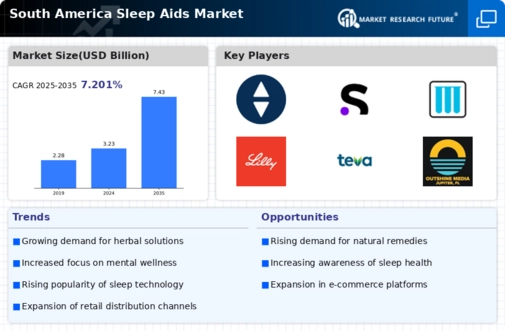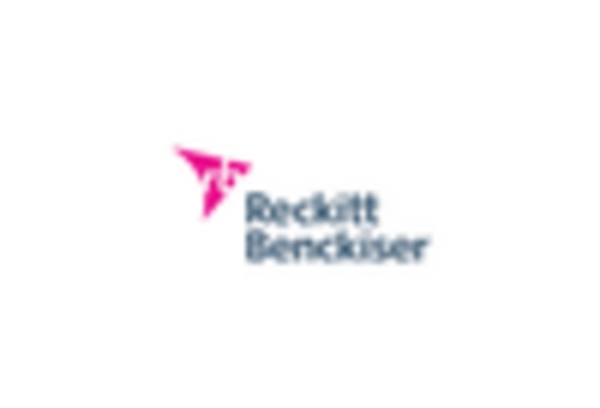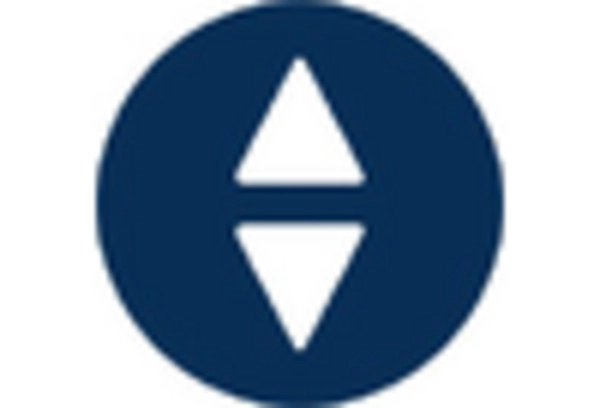Aging Population
The demographic shift towards an older population in South America is significantly influencing the sleep aids market. As individuals age, they often experience changes in sleep patterns and an increased likelihood of sleep disorders. Reports indicate that nearly 40% of older adults in the region suffer from insomnia or other sleep-related issues. This demographic trend is likely to drive the demand for sleep aids, as older adults seek solutions to improve their sleep quality. Consequently, the sleep aids market may see a surge in product offerings tailored specifically for this age group, including both pharmaceutical and natural options.
Increasing Sleep Disorders
The prevalence of sleep disorders in South America appears to be on the rise, driven by various factors such as stress, lifestyle changes, and urbanization. According to recent health surveys, approximately 30% of the population reports experiencing insomnia or other sleep-related issues. This growing concern for sleep health is propelling demand for products within the sleep aids market. As awareness of the importance of sleep for overall well-being increases, consumers are more inclined to seek solutions, including over-the-counter medications and natural supplements. The sleep aids market is thus positioned to benefit from this trend, as more individuals prioritize their sleep quality and seek effective remedies.
Cultural Shifts Towards Wellness
There is a noticeable cultural shift towards wellness and holistic health in South America, which is positively impacting the sleep aids market. Consumers are increasingly prioritizing self-care and seeking natural and organic products to enhance their overall well-being. This trend is reflected in the growing popularity of herbal sleep aids and supplements, which are perceived as safer alternatives to traditional pharmaceuticals. As the wellness movement continues to gain traction, the sleep aids market may witness a diversification of product offerings, catering to consumers' preferences for natural and holistic solutions to improve sleep quality.
Rising Awareness of Mental Health
There is a growing recognition of the connection between mental health and sleep quality in South America. As mental health issues become more openly discussed, the impact of stress, anxiety, and depression on sleep is increasingly acknowledged. This awareness is likely to drive demand for sleep aids, as individuals seek to manage their mental health and improve their sleep quality. The sleep aids market may experience growth as consumers turn to various products, including herbal remedies and cognitive behavioral therapies, to address both mental health and sleep issues. This dual focus on mental well-being and sleep health could reshape the landscape of the sleep aids market.
Technological Advancements in Sleep Monitoring
The advent of technology in sleep monitoring is transforming the sleep aids market in South America. Wearable devices and sleep tracking applications are gaining popularity, enabling consumers to gain insights into their sleep patterns. This data-driven approach allows individuals to identify sleep issues and seek appropriate remedies. As technology continues to evolve, the integration of sleep aids with smart devices may become more prevalent, enhancing user experience and effectiveness. The sleep aids market could see increased sales as consumers become more informed about their sleep health and actively seek solutions based on their monitored data.


















Leave a Comment